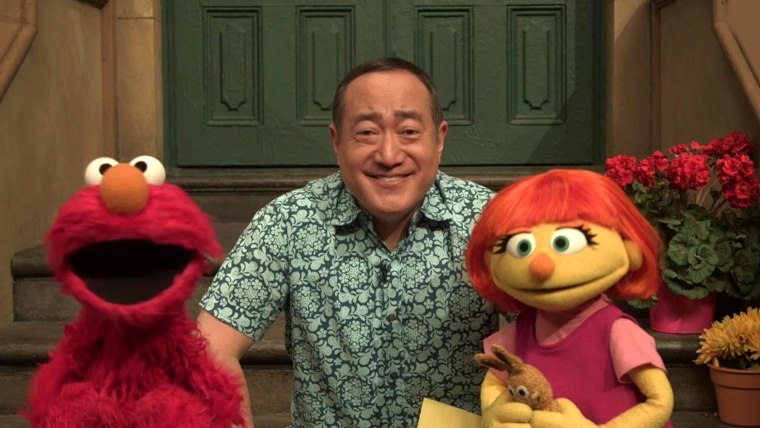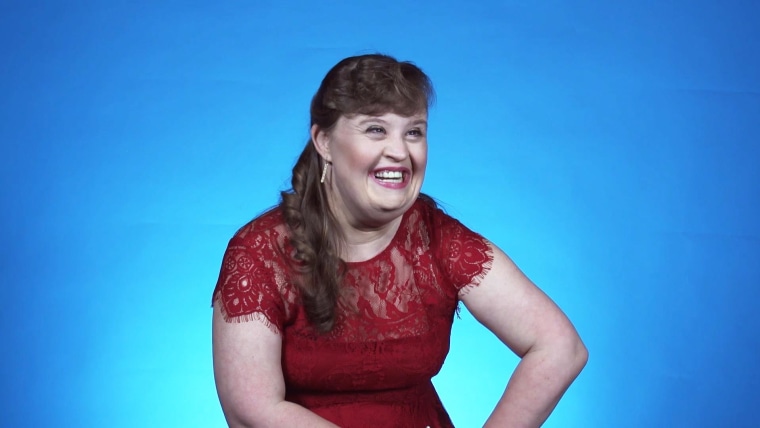Hartup and Stevens Friendship Among School Aged Children
If you have a child who can speak, you've probably had the experience: Your child spots a person in a wheelchair and they start pointing and asking questions, loudly. You cringe, embarrassed that your child is bothering someone, and try to redirect them or tell them not to stare, but you are tempted to stare as well. Or you try to ignore the situation altogether.
I understand your gut reaction, but as a former teacher, person who's used a wheelchair for 30 years and disability activist, I can tell you it's not the right way to handle these situations.
Watch TODAY All Day! Get the best news, information and inspiration from TODAY, all day long.
Michelle Nario-Redmond, a psychology professor and author of the textbook "Ableism: The Causes and Consequences of Disability Prejudice" says that when parents "yank the kids away from approaching a person with a visible disability, kids pick up on the fact that there's 'something wrong,' 'something shameful,' that they should avoid."
July is Disability Pride Month, so it's a perfect time to address the topic of disability with your kids. People with disabilities account for nearly one in five Americans, and still experience great amounts of discrimination at every stage of life.
While the conversations and interactions may feel uncomfortable for you, they'll provide your children with the confidence to treat disabled people with respect. Here's how to talk about it at every age and stage.
Preschool and kindergarten
These are some of the most formative years to discuss disability with your kids and a great opportunity for them to interact with visibly disabled people.
If your child starts to comment on someone's wheelchair or prosthetic, you can say, "Isn't that cool? That's what they use to get around."
If your child starts asking more questions, encourage their curiosity but remind them that staring is impolite in any situation. Depending on where you are, you may ask the person with a disability if your child can chat with them.
For example, I was in Scotland a few years ago and a 3-year-old on the ferry had never seen a wheelchair. The mom asked if it would be all right for him to say hi, as he seemed hesitant. It turned out to be a lovely experience and the child spoke to me about his bike. I hope our chat removed his reservations and also normalized seeing a person in a wheelchair for him.
Sesame Street is another fantastic resource. The show has a character named Julia on the autism spectrum and does not shy away from addressing disability head-on. There are also wonderful books that discuss disabilities as a positive part of the human experience.

Elementary school
As your children gets older, it's appropriate to discuss boundaries with people. For example, teaching them from a young age about service dogs is important. This is an area where the golden rule is a perfect teaching tool — ask your child how they want to be treated and emphasize to them that disabled people should be treated the same.
Nario-Redmond has both non-disabled and disabled children and says, "When my kids were little, we emphasized that people's different ways of moving, learning and experiencing the world are to be celebrated and valued, for example as part of multicultural awareness opportunities in school and scouting."
Modeling appropriate behavior is especially important when it comes to interacting with people with disabilities. Avoid using words like, "inspiring" or "amazing" to describe a person with a disability -- unless they do something truly inspiring or amazing, beyond simply existing in the world, of course!
Additionally, avoid talking about God healing the person. This language shows a child that disability is something to fix, instead of be accepted. You will help your child most if you treat disability as an experience, not something to be feared.
You can use experiences children already understand to teach about disability. For example, Nemo and Dory from "Finding Nemo" have clear disabilities; although your child may not immediately make the connection, you can make that connection for them.
While invisible disabilities are a more abstract aspect of disability, it's equally important to teach your children that many people have disabilities that you can't see.
Middle school
It's important to acknowledge how vast the disability experience is and how, much like your child, each person is unique.
Parents should take this time to explain to their children that while disabled people often face discrimination from society, as long as the tools are in place that they need, disabled people lead ordinary lives. I use the example of stairs — if a non-disabled person needs to get to the second floor of a home but there aren't any stairs, they can't do it. We each need the proper tools to get to where we want to go or perform basic activities.
Nario-Redmond notes that middle school-aged children, "need to know that disabled people are everywhere and how we talk about them matters in terms of changing stereotypes and confronting prejudice."
Middle school is also a time to teach your child proper vocabulary surrounding disability. Most importantly, make sure they know that the "R" word is off-limits. Explain to them the pain and discrimination that accompanies that word and how it makes people feel.
High school
It's important for your high-schooler to understand the plight that people with disabilities have faced. Teach your child about ableism and the discrimination people with disabilities regularly experience and the injustices they still battle against, like employment discrimination.
The main thing to remember when having this conversation with your kids is not to shame them for beliefs they may hold, and to use these moments as a teaching opportunity.
When I was in high school, classmates would tell me they'd rather be dead than not be able to play a certain sport. If your child expresses these negative attitudes, ask them why they feel this way and point to examples of how disabled people shape the world.
Your child may have uncomfortable questions around dating, the ability to have children and the general lifestyle of disabled people. There are books below that will help with these questions, but overall, it's important to emphasize that people with disabilities lead healthy, functioning lives. The ability to have children, for example, is different for everyone, disabled or not.
Most of all, encourage your kids to treat others with kindness and curiosity, not pity or fear.
Good books about disability
"Don't Call Me Special: A First Look at Disability," by Pat Thomas (Preschool/kindergarten)
"All the Way to the Top: How One Girl's Fight for Americans with Disabilities Changed Everything," by Nabi Ali (Elementary school)
"Not So Different: What You Really Want to Ask About Having a Disability," by Shane Burcaw (High school)
"Disability Visibility: First-Person Stories from the Twenty-First Century," edited by Alice Wong (High school)
"The One Thing," by Marci Lyn Curtis (Middle school)
"The Silence Between Us," by Alison Gervais (Middle school)
Related video:

Hartup and Stevens Friendship Among School Aged Children
Source: https://www.today.com/parents/how-teach-children-about-disability-every-age-t187942